flowchart TB A[responce] --> B(continuous) A --> C[discrete] A --> D[factor] B --> F[real line] B --> G[pos. real line] B --> H[0 to 1] C --> J[infinite count] C --> I[finite count] D --> K[unordered] D --> L[ordered] I --> N[binary] K --> N[binary]
Distributions
Introduction
Suitable distribution for the response variable.`
different types of distributionsproperies of distributionsa procedure to find a good initial distribution for the response
distributions
Types
continuous
- \((-\infty, \infty)\),
real line; - \((0, \infty)\),
positive real line; - \((0,1)\) from 0 to 1
- \((-\infty, \infty)\),
discrete
- \((0,1,\dots, \infty)\)
- \((0,1,\dots, N)\)
mixed part continuous part discrete
- \([0, \infty)\) zero adjusted
- \([0, 1]\) zero (and 1) inflated
continuous
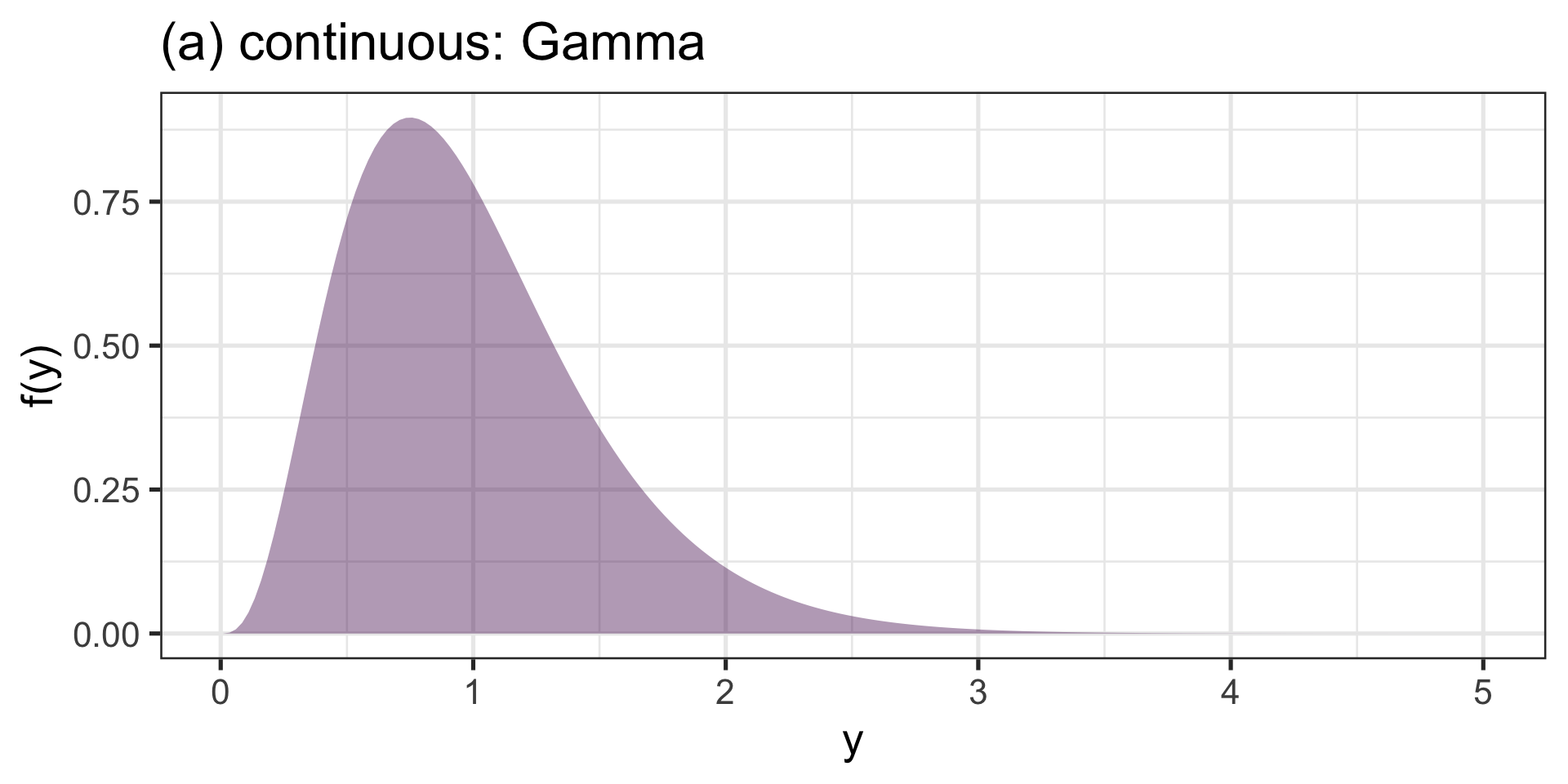
(a) continuous
discrete
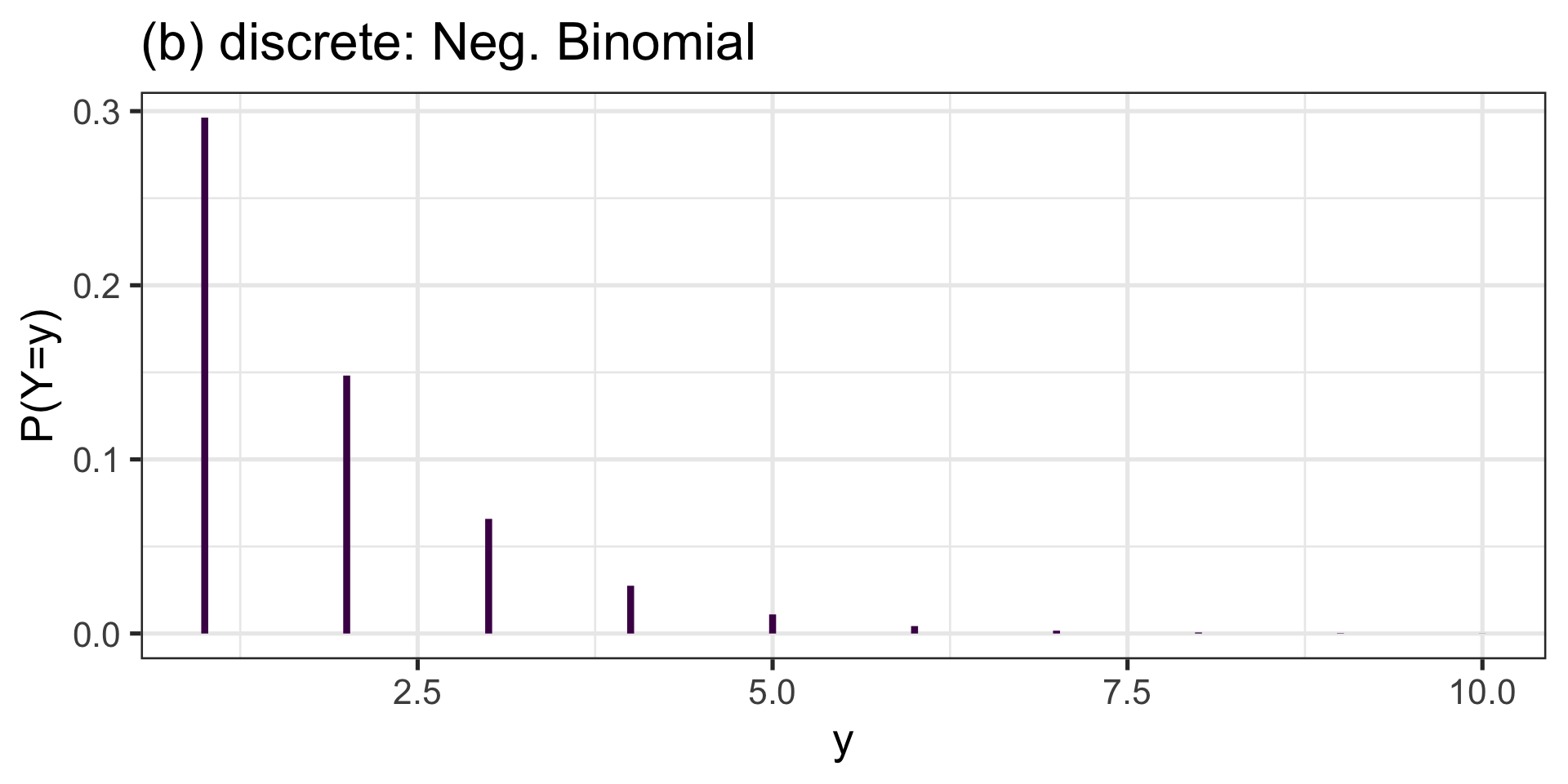
(a) discrete
mixed
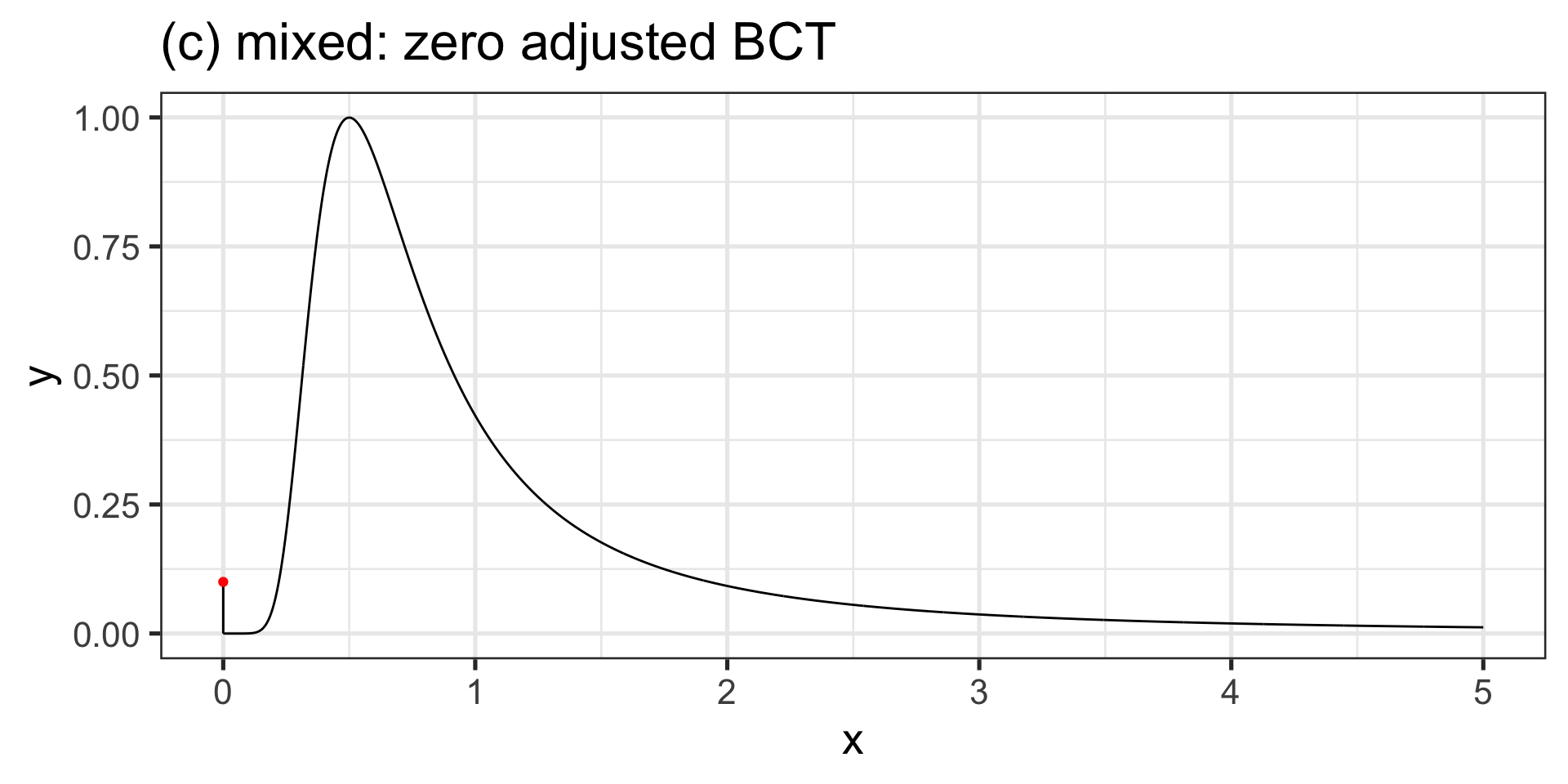
(a) mixed
properties
\(f(y;{\theta})\)
\(\int_{R_Y} f(y) \; dy=1\)
\(\sum_{y\in R_Y} f(y)=\sum_{y \in R_Y} P(Y=y)=1\)
\(\int_{R_{1}} f(y)\, dy + \sum_{y \in R_{2}} f(y) = 1\).
parameters
\(f(y;{\theta})\)
\({\theta}= (\theta_1, \theta_2, \ldots, \theta_k)\).
location
scale
shape
- skewness
- kurtosis
left skew
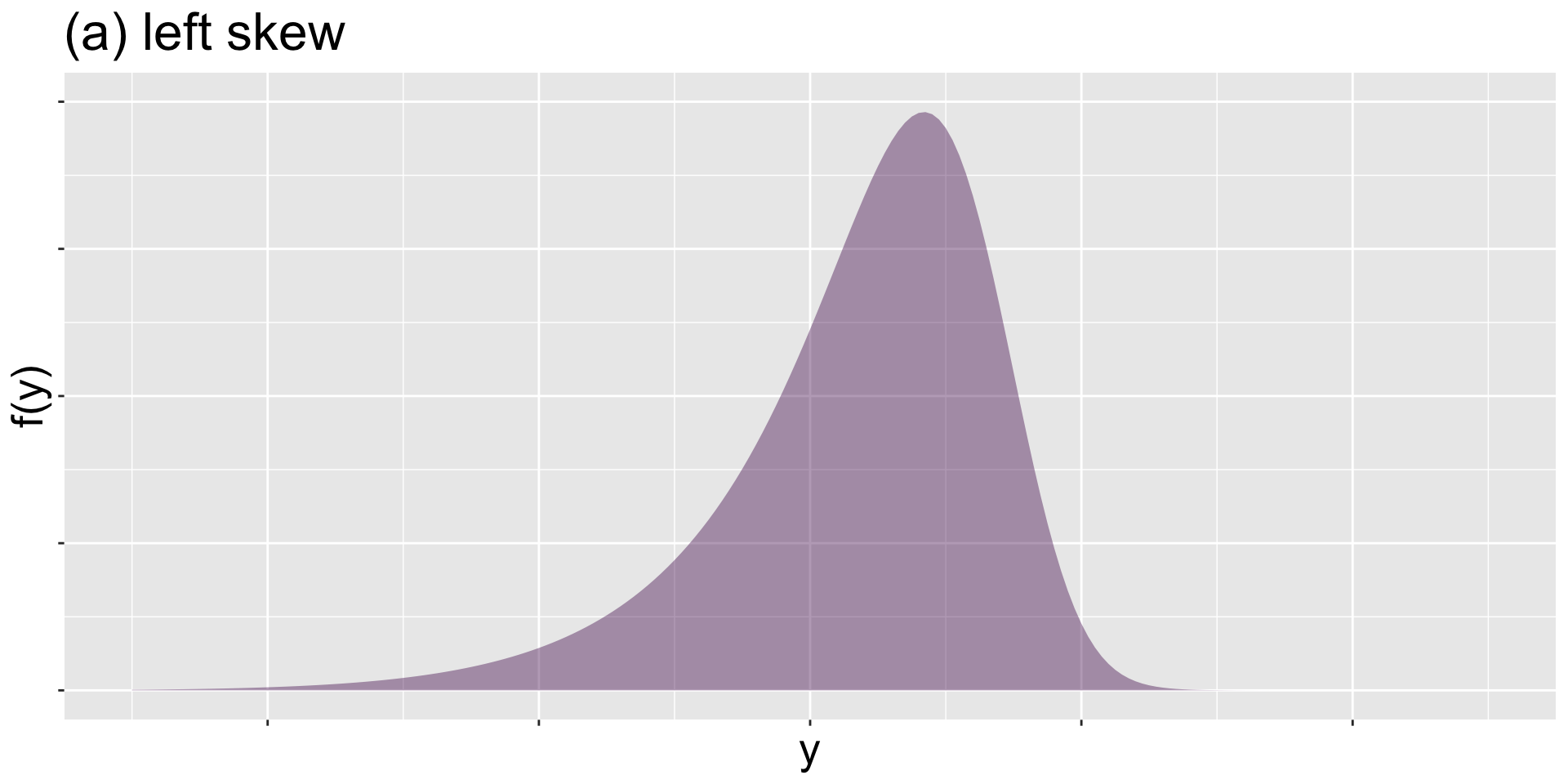
(a) left skew
symmetric
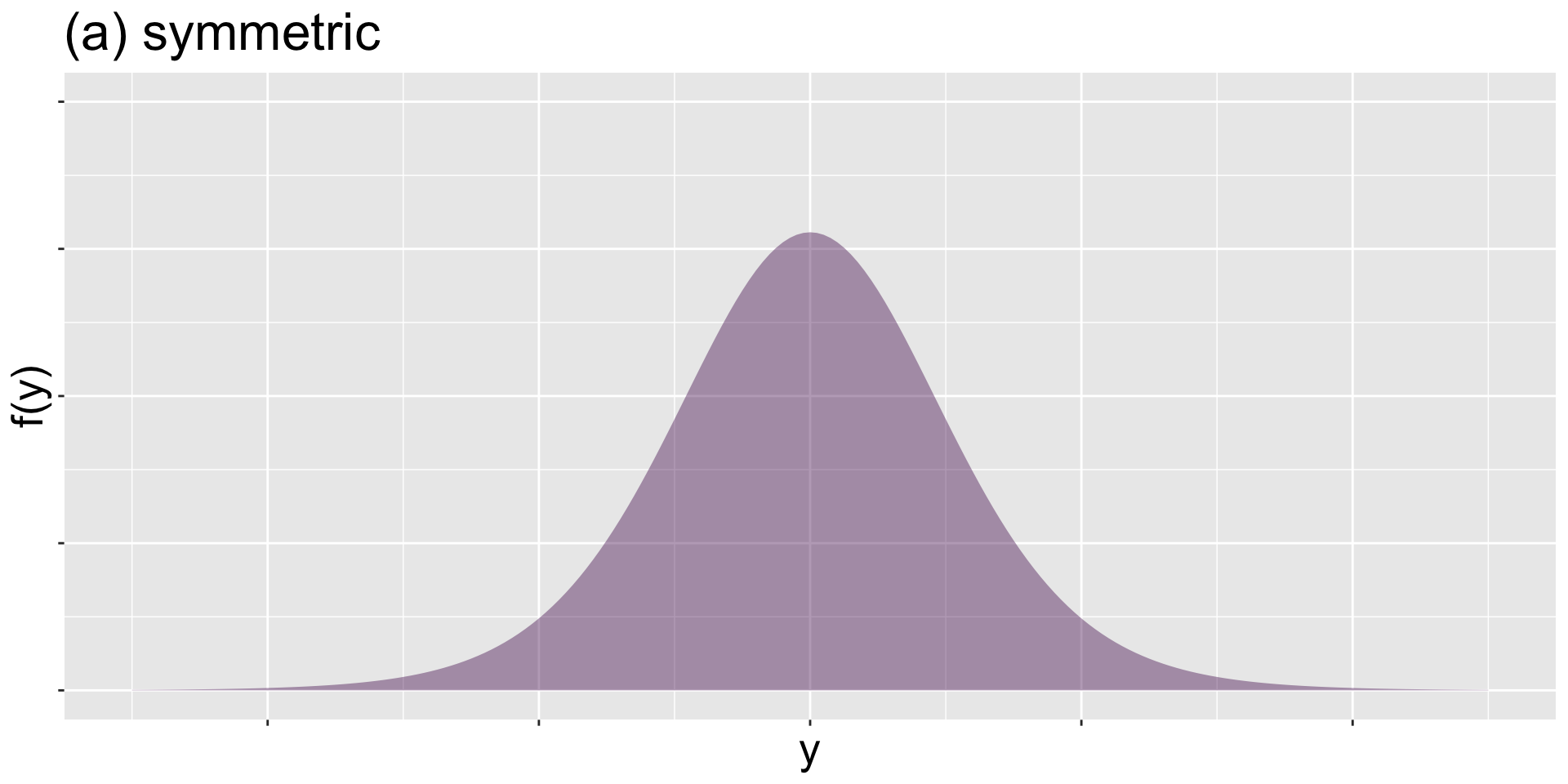
(a) symmetric
right skew
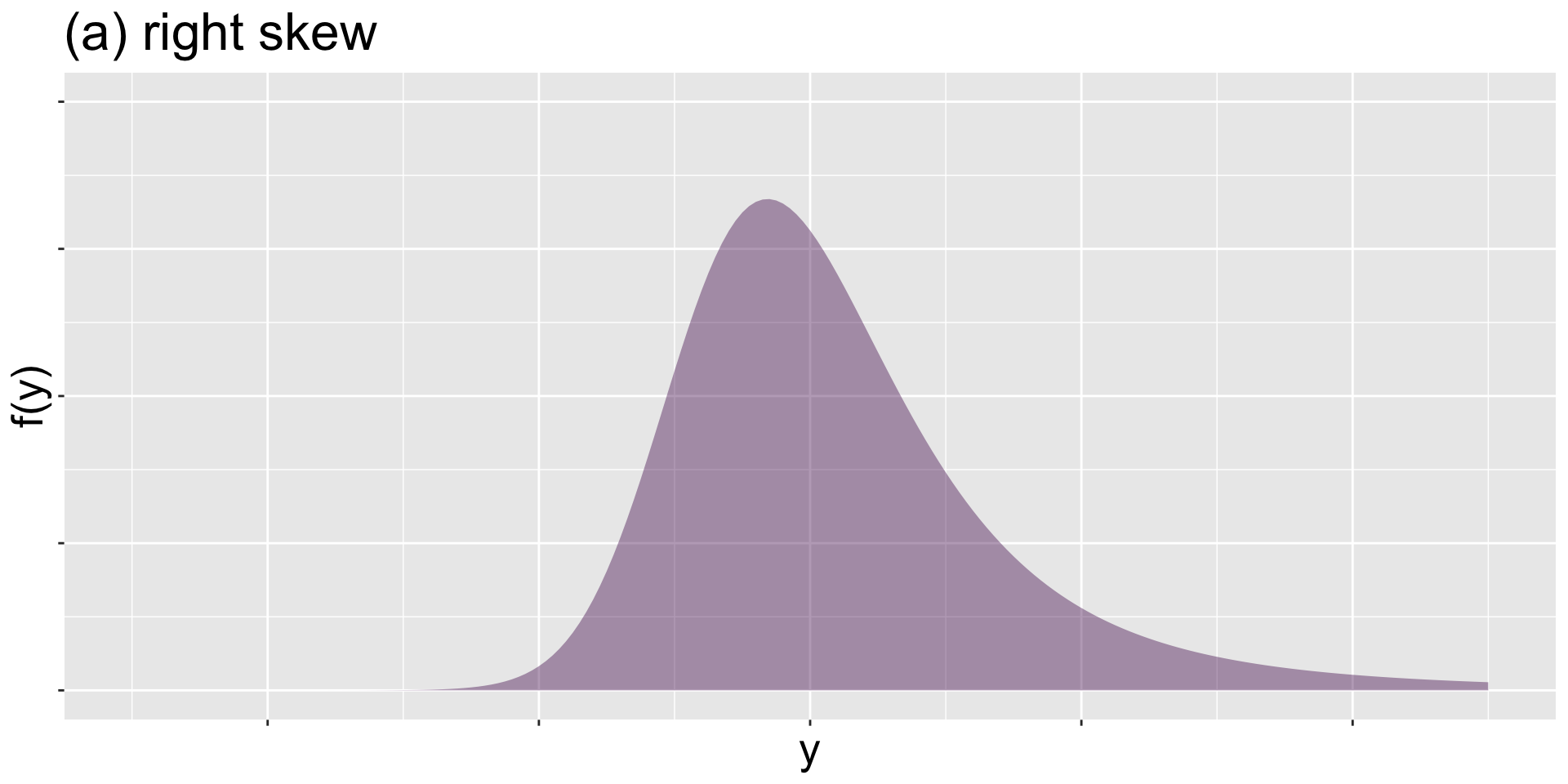
Figure 6: right skew
platy
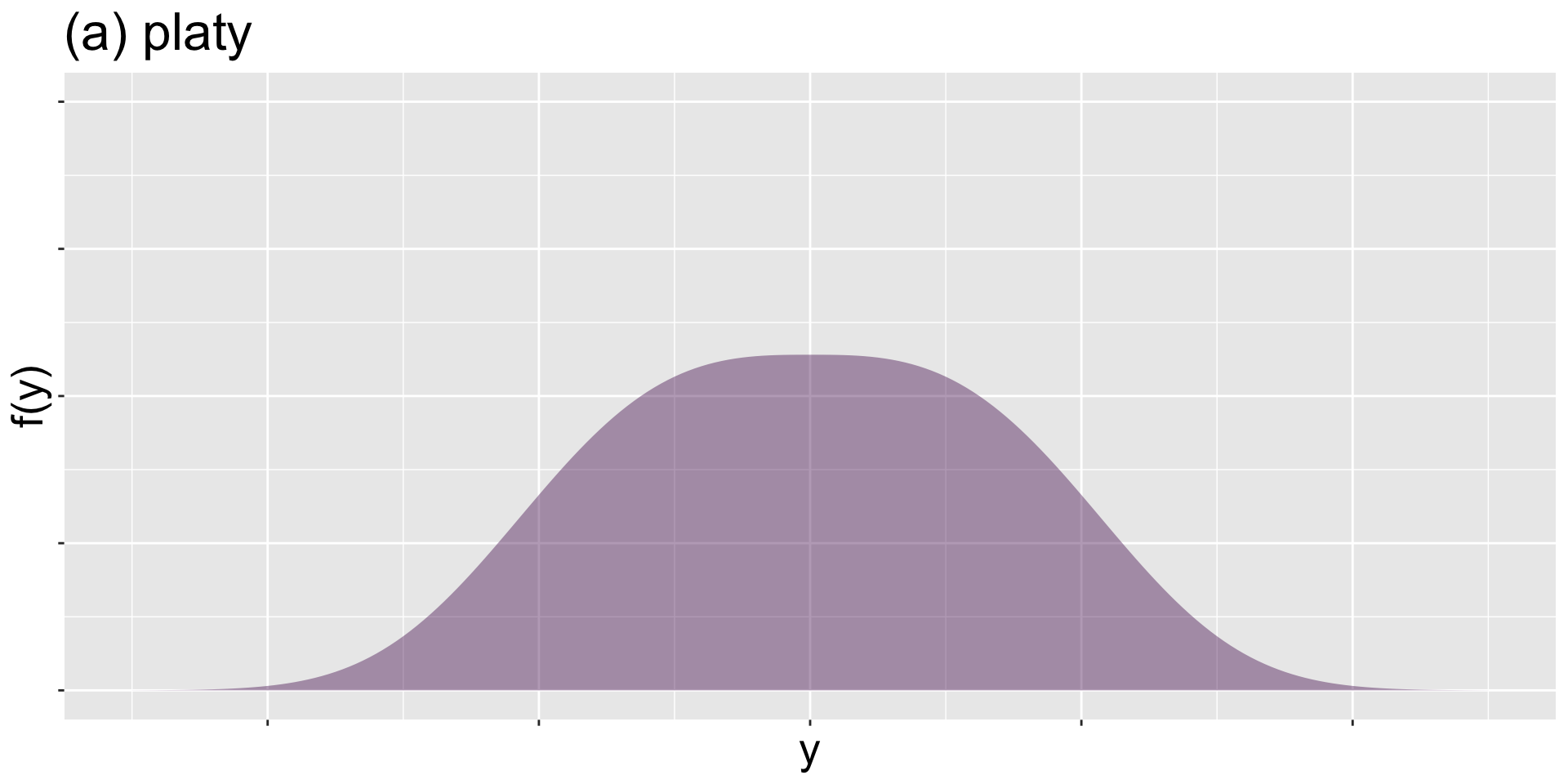
(a) platy
meso
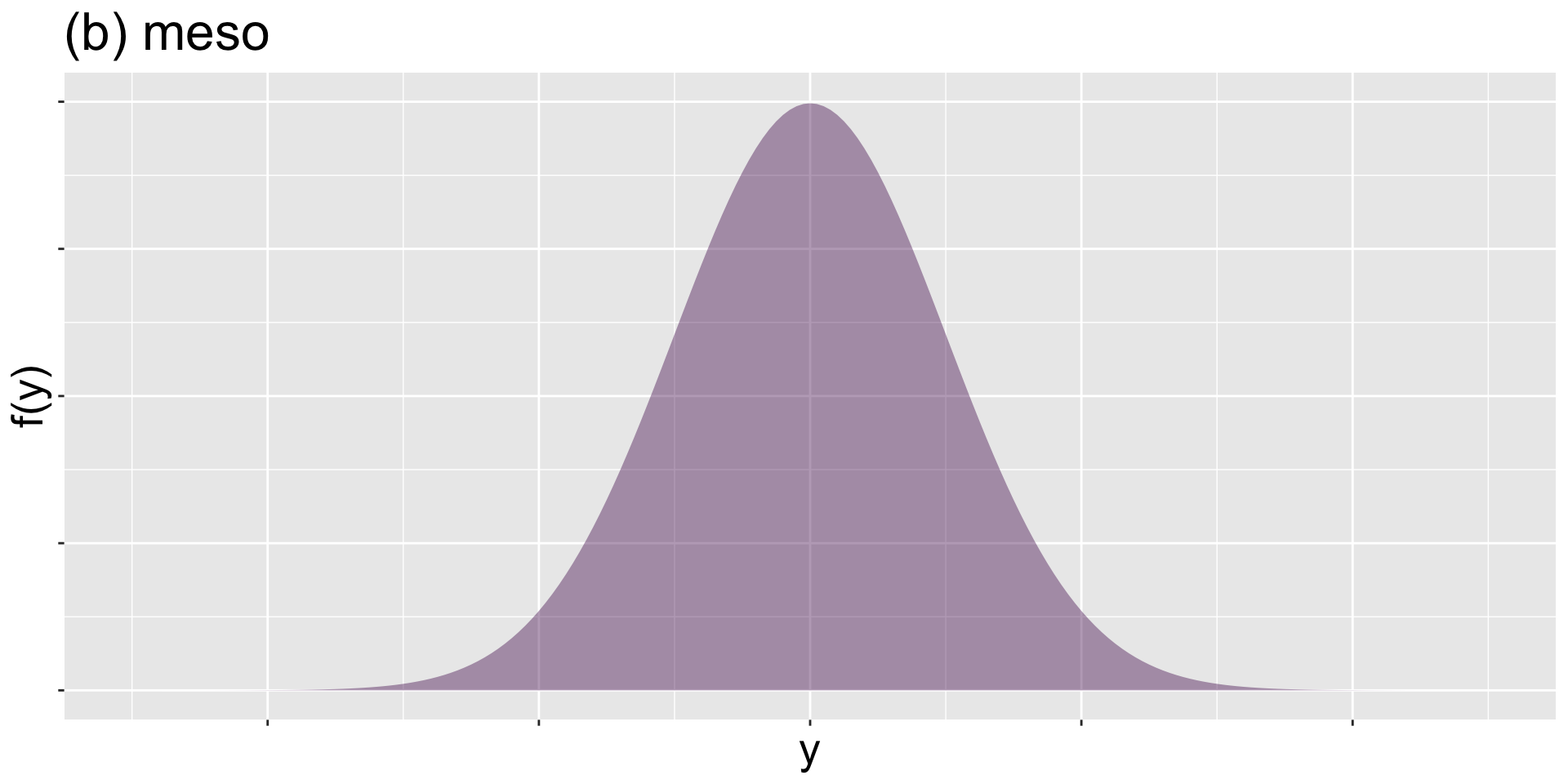
Figure 8: meso
lepto
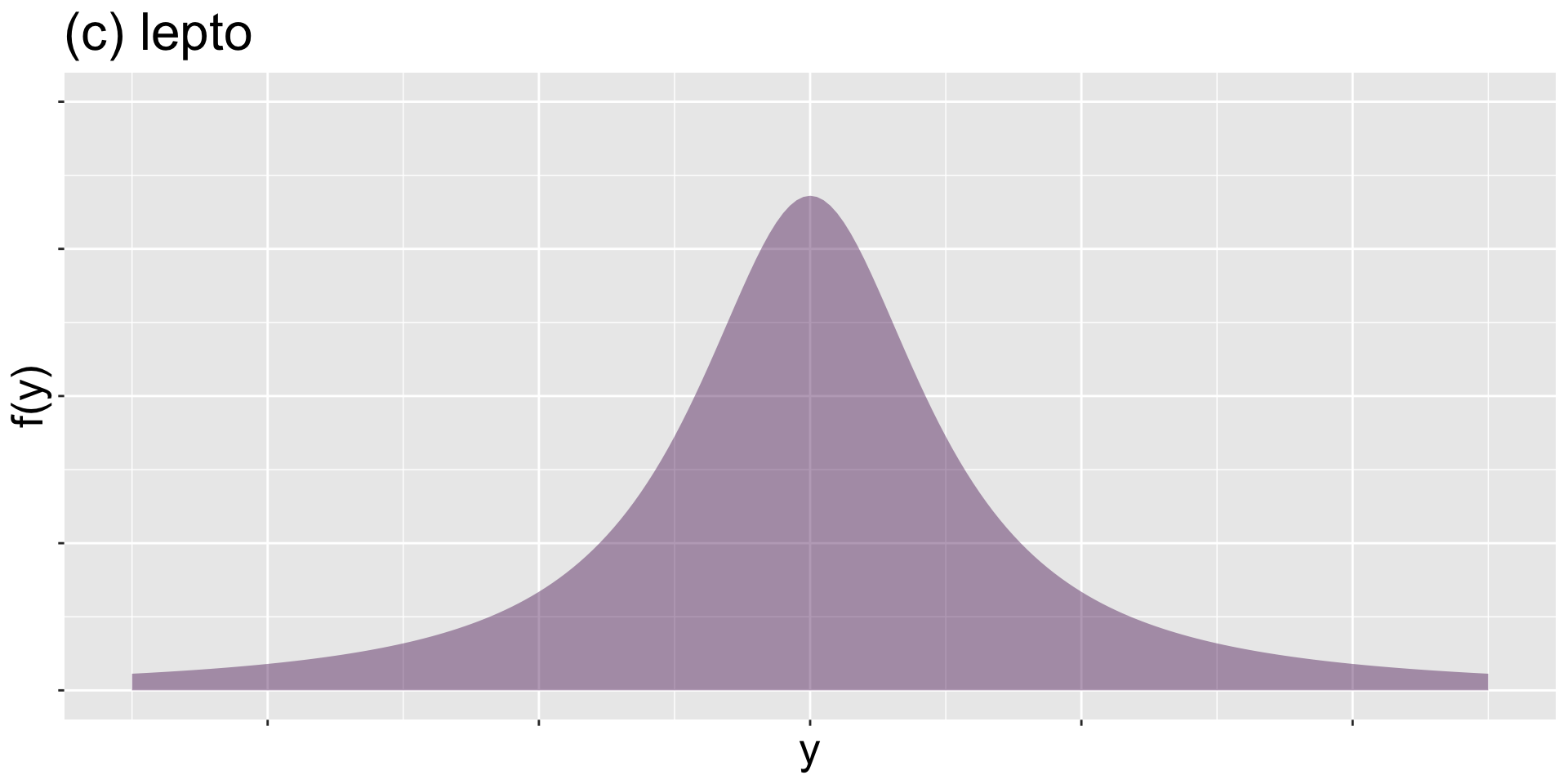
Figure 9: lepto
momments based characteristics
mean \[\begin{align*} E(Y)= \begin{cases} \int_{-\infty}^{\infty} y f(y)\, dy&\text{for continuous}\\ \sum_{y \epsilon R_Y} y\, P(Y=y) &\text{for discrete} \end{cases} \end{align*}\]
variance
coefficient of skewness
(adjusted) coefficient for kurtosis
mean
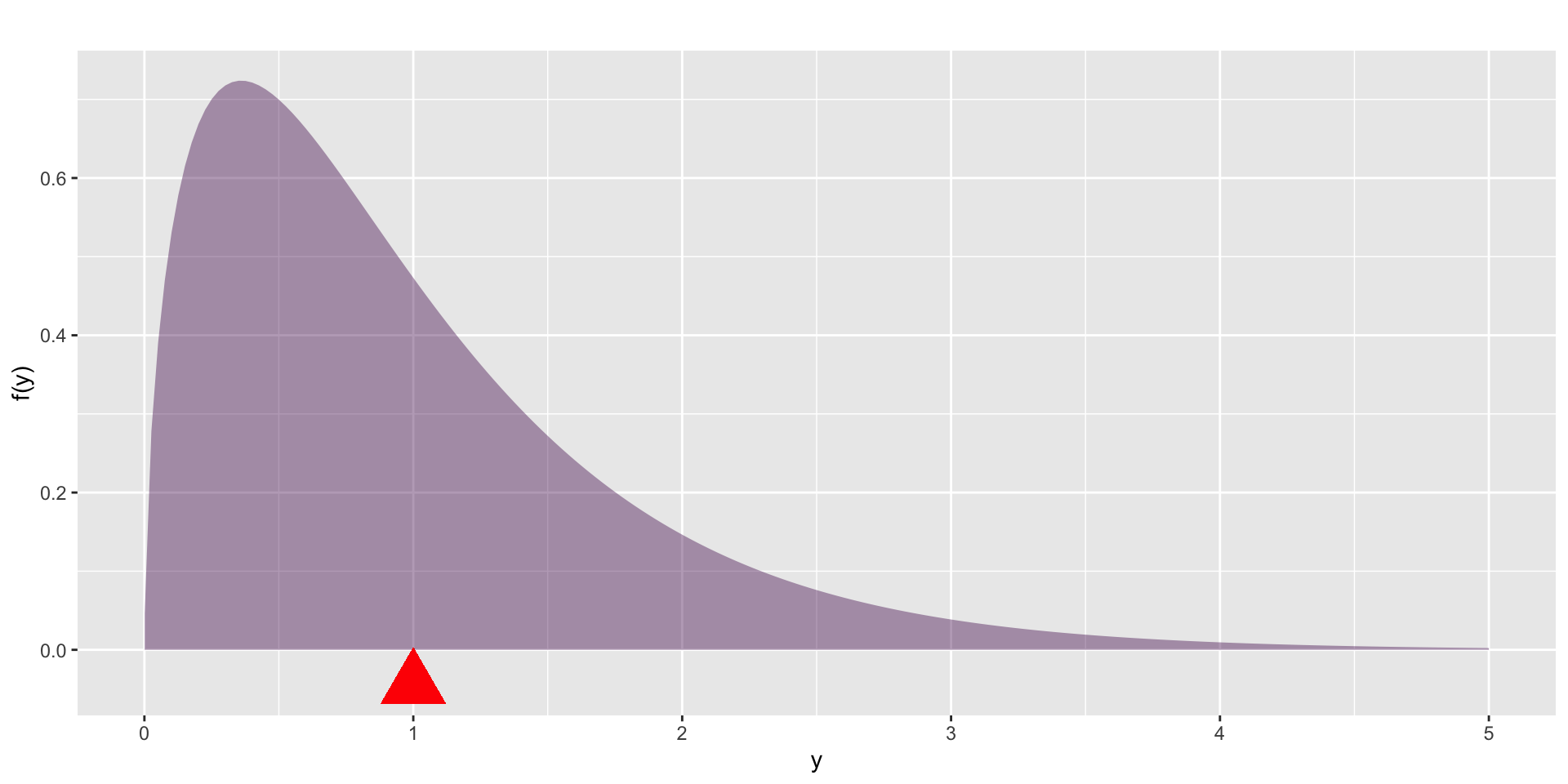
Figure 10: The mean is the point in which the distribution is balance.
centile based characteristics
the median
semi interquartile range
centile skewness
centile kurtosis
quantiles

Figure 11: Showing how \(Q1\), \(m\) (median), \(Q3\) and the interquartile range IR of a continuous distribution are derived from \(f(y)\).
The GAMLSS families
over 100 explicit distributions
implicit distributions
- truncation
- log distributions
- logit distribution
- inflated distributions
- zero adjusted
- generalised Tobit
book 2

book2
select distribution
Find a distribution
Summary
- Select an appropriate class of distributions following the diagram above.
- Use the function
chooseDist()to fit a “linear” models for both \(\mu\) and \(\sigma\) - Use GAIC to finds the best fit
- Use model diagnostics to ckeck the distribution
chooseDist()
worm plot
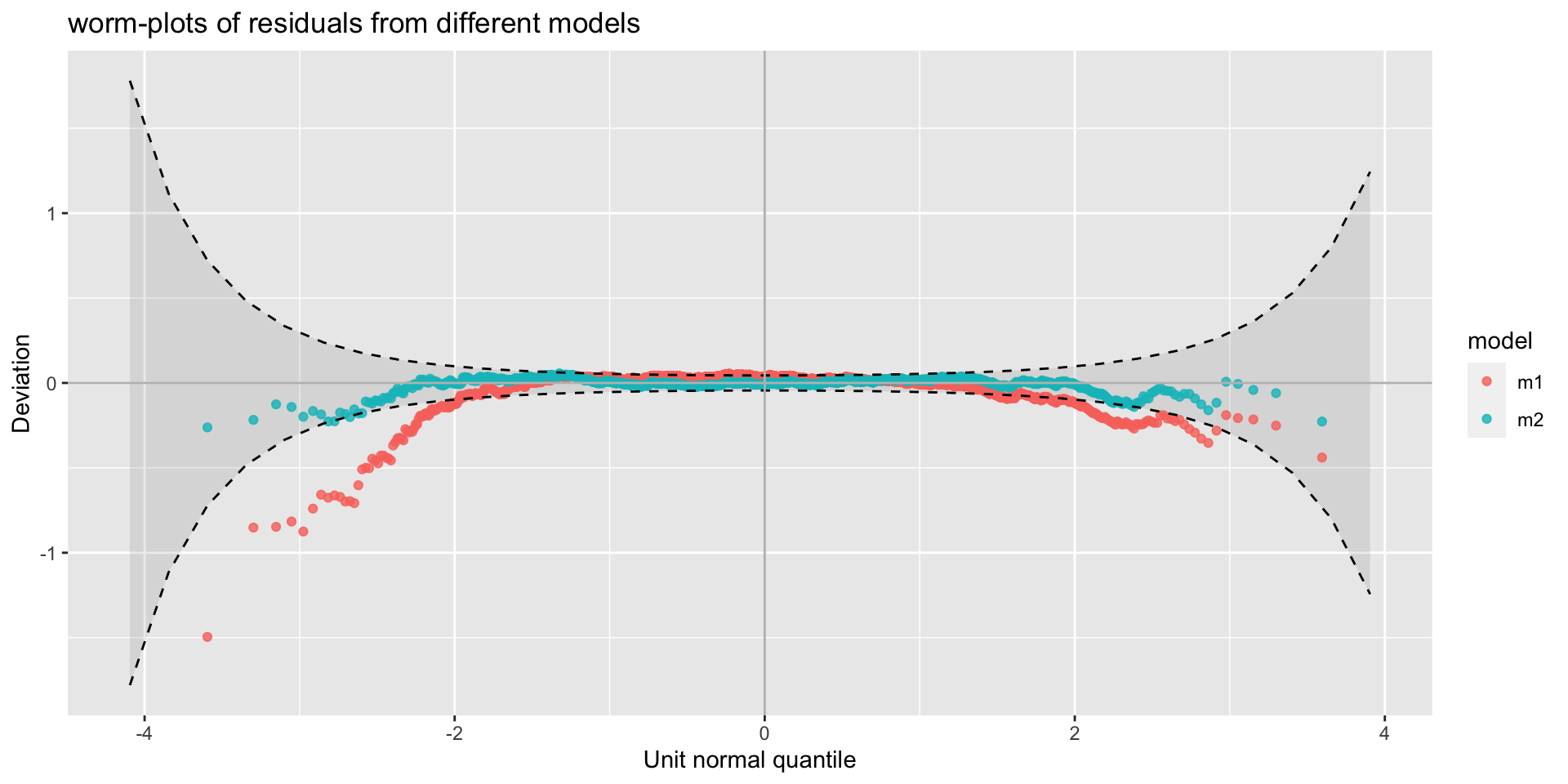
(a) worm plots
bucket plot
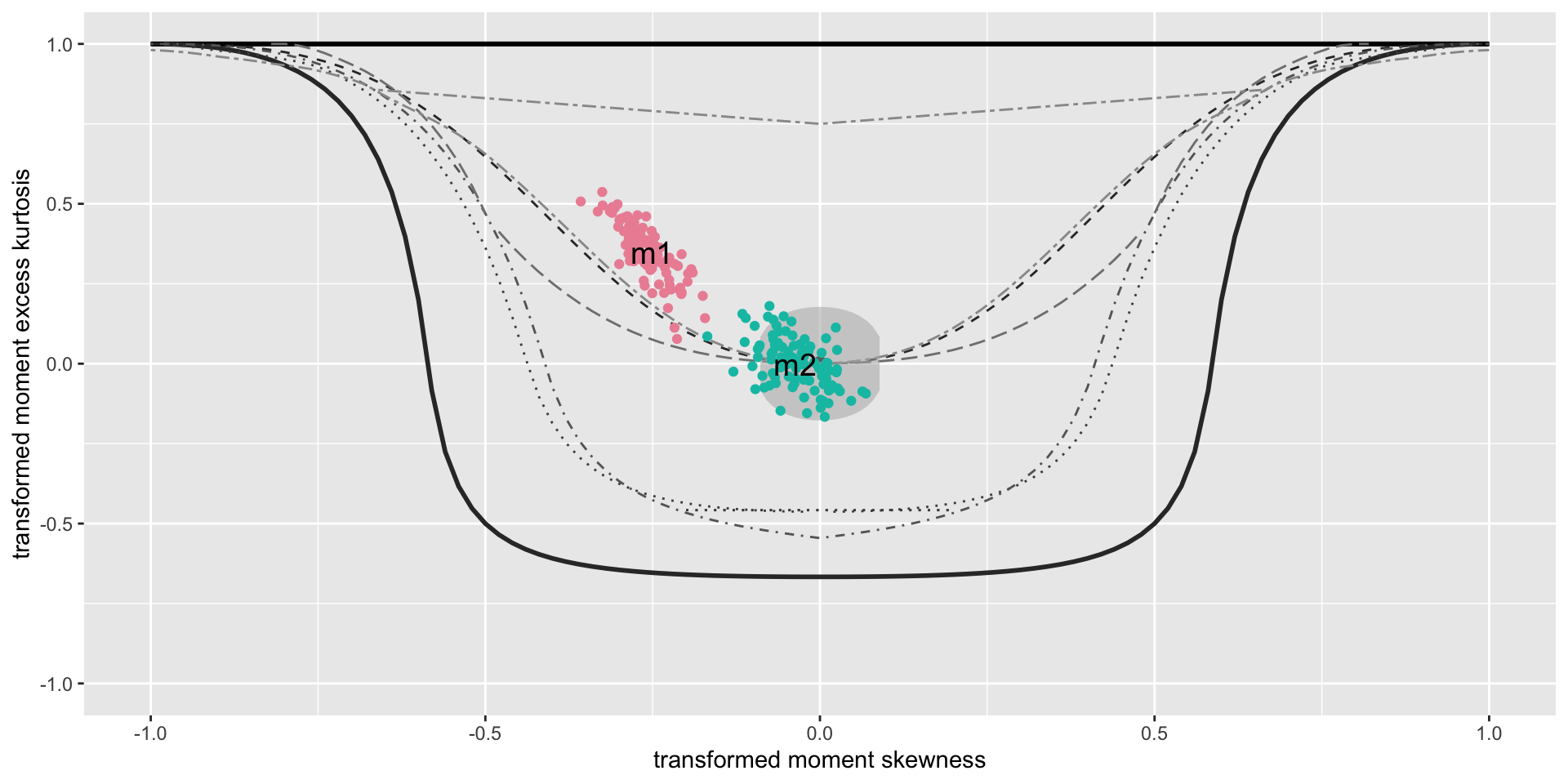
(a) bucket plots
Summary
flowchart TB
A(responce) --> B[type]
B --> C[initial fit]
C --> D[chooseDist]
D --> F{check}
F --> G[residual diagnostics]
F --> E[overfitting]
end

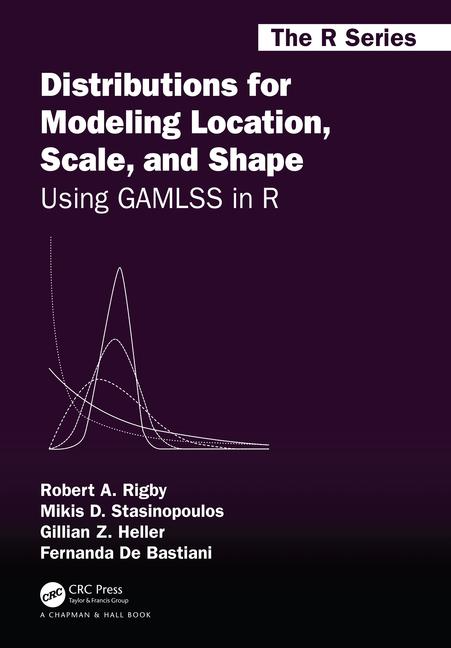
 The Books
The Books

www.gamlss.com